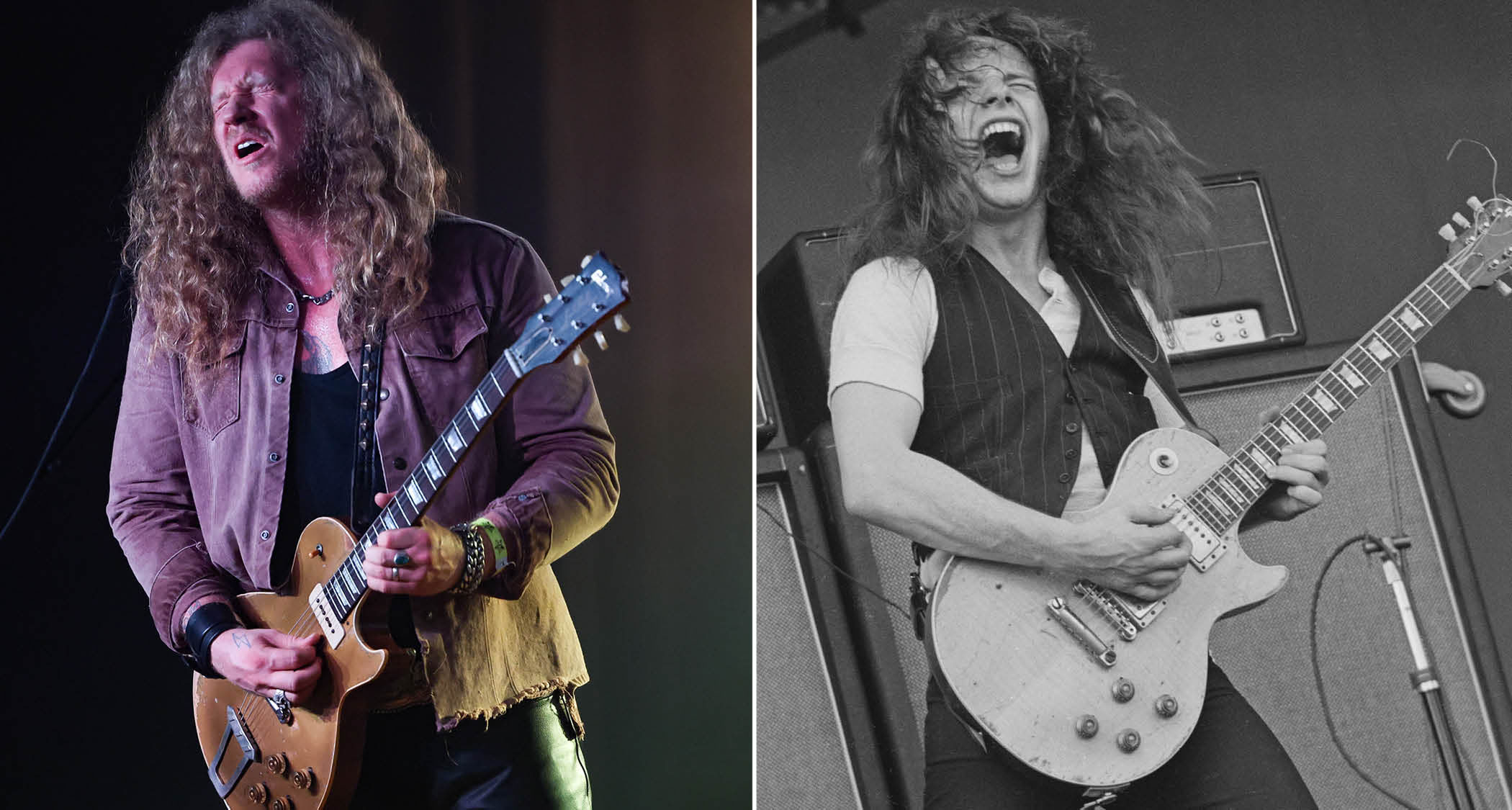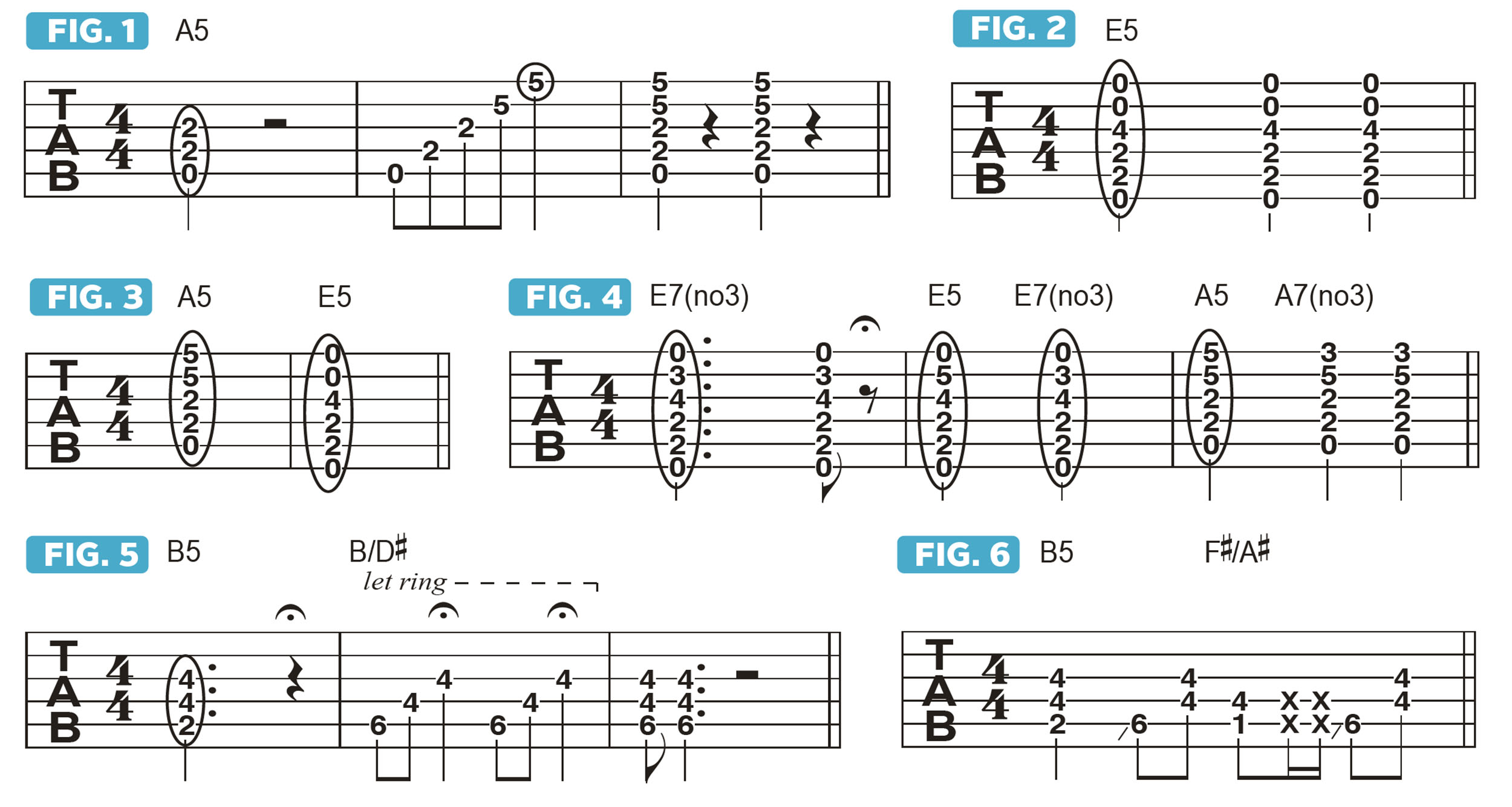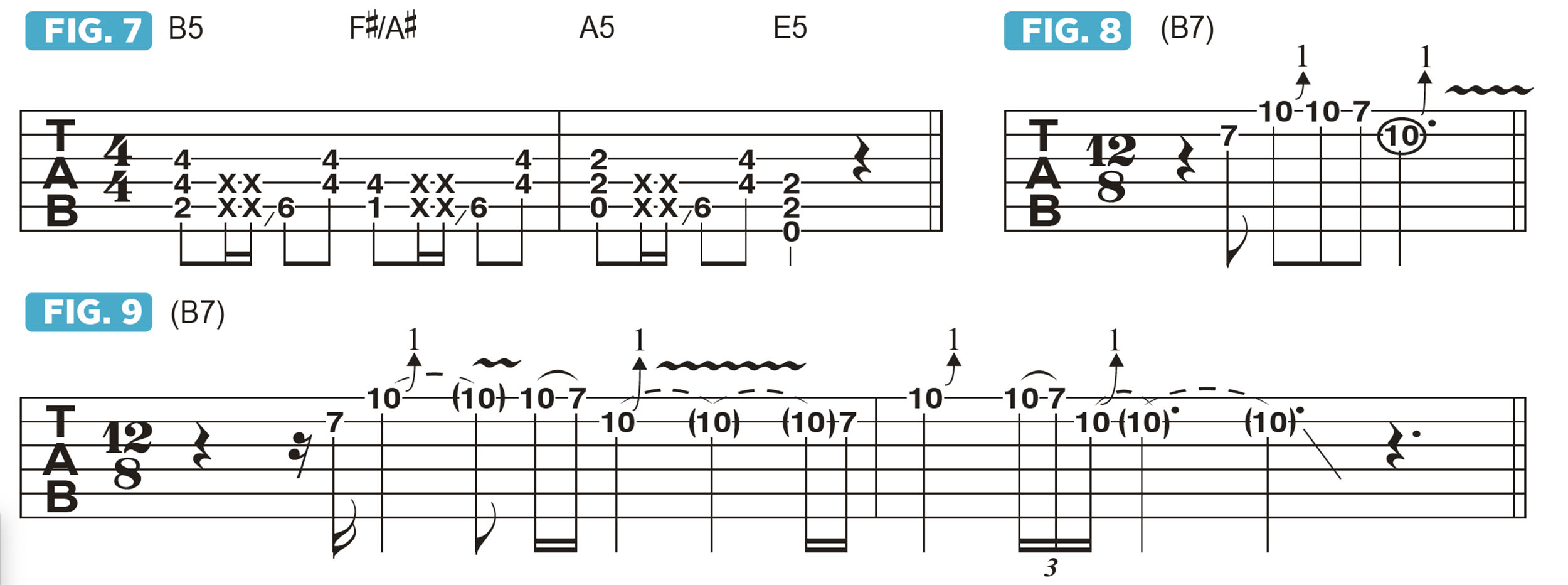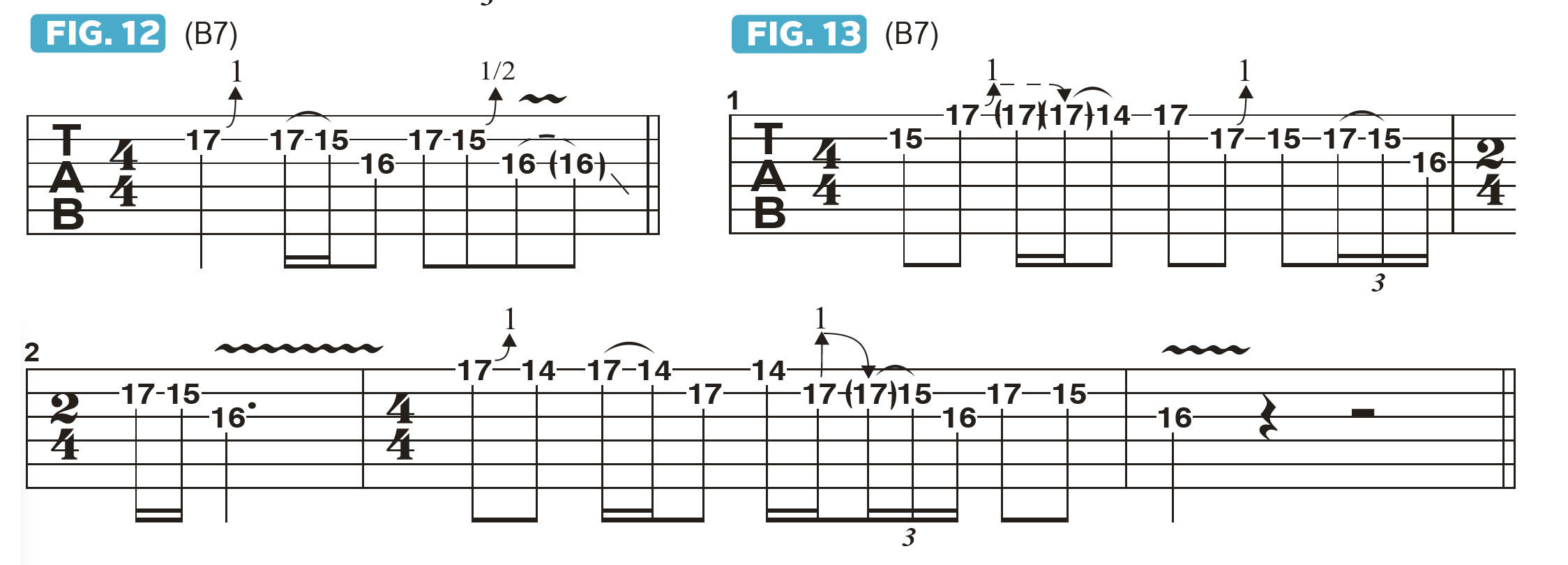“He had one of the greatest finger vibratos of all time”: Jared James Nichols on the guitar genius of Free’s Paul Kossoff
Kossoff is one of Jared James Nichols’ six-string heroes: he unpacks the Free guitarist’s signature vibrato and phrasing

One of my biggest influences is the great Paul Kossoff from the band Free. Paul had a guitar riff that changed rock radio in the early ’70s, All Right Now. Like Leslie West, Kossoff wrote incredible songs that were larger than life, transcending the world of three-piece guitar rock.
The distinctive ways in which Paul bent notes and voiced chords exemplified the feeling of freedom as a guitarist.
For example, when he played an A5 power chord, he wouldn’t just play the typical three-note voicing shown in bar 1 of Figure 1. He would expand it to include notes barred across the top two strings, as shown in bar 2. Broadening power chords in this way gives them a unique, powerful sonic punch.
We can apply the same approach to an E5 power chord, as illustrated in Figure 2. Here, an E-B-E note stack played on the bottom three strings is topped with a fretted B on the G string’s 4th fret, along with the open top two strings. Figure 3 has us moving from A5 to E5 using these octave-doubled voicings.

Another nice twist Paul would do is drop a power chord's high root note down a whole step to the dominant 7th. In bars 1 and 2 of Figure 4, I substitute D at the 3rd fret on the B string in the E5 power chord, resulting in E7(no3). In bar 3, I substitute G on the high E string’s 3rd fret in the A5 chord, resulting in A7(no3).
Kossoff also liked to voice the 3rd of the chord as its lowest note, or “in the bass.” For example, in Figure 5 I begin with a B5 chord, voiced B, F#, B, low to high, but then substitute the major 3rd, D#, for the low B root, resulting in B/D#, voiced as D#, F#, B.
In Figure 6, I utilize both B5 and B/D#, as well as F#/A#. Paul would use this approach to craft catchy rhythm parts, not unlike Figure 7. Notice the use of inversions to create chromatic movement.

Kossoff also had one of the greatest finger vibratos of all time, which he used to convey so much feeling and attitude in his single-note lines. Played in the key of B, Figure 8 presents a simple phrase based on the B minor pentatonic scale (B, D, E, F#, A). Figure 9 demonstrates how Paul might have played this riff, with a fast, wide vibrato and more intricate phrasing.
Paul also loved to use oblique bends, where one note rises while another remains stationary. In Figure 10 and Figure 11, the notes E and A are played together, with a whole-step bend and release on the G string.

Figure 12 and Figure 13 illustrate some high-register B minor pentatonic licks in Kossoff’s style. Figure 12 moves between the notes E, D and B, and FIGURE 13 elaborates on the approach with more complex phrases played on the top three strings, all accentuated with the Kossoff-style fast, wide vibrato.
Get The Pick Newsletter
All the latest guitar news, interviews, lessons, reviews, deals and more, direct to your inbox!
“There are so many sounds to be discovered when you get away from using a pick”: Jared James Nichols shows you how to add “snap, crackle and pop” to your playing with banjo rolls and string snaps
How to find new approaches to blues soloing – using fingerstyle improv ideas and Roy Buchanan-inspired licks










![Joe Bonamassa [left] wears a deep blue suit and polka-dotted shirt and plays his green refin Strat; the late Irish blues legend Rory Gallagher [right] screams and inflicts some punishment on his heavily worn number one Stratocaster.](https://cdn.mos.cms.futurecdn.net/cw28h7UBcTVfTLs7p7eiLe.jpg)
